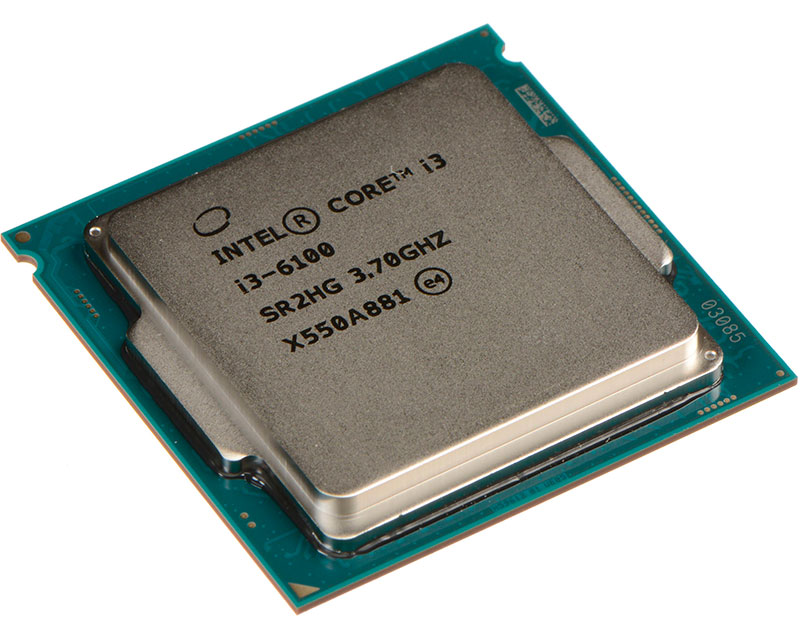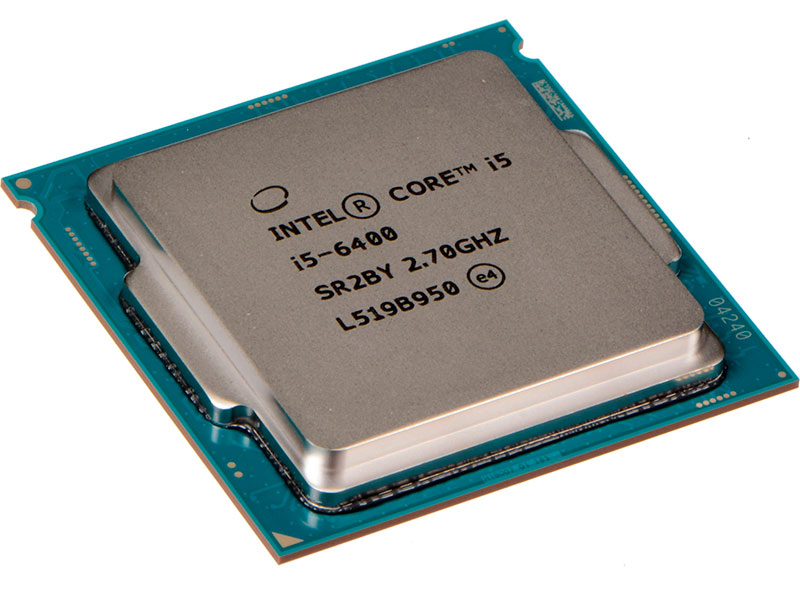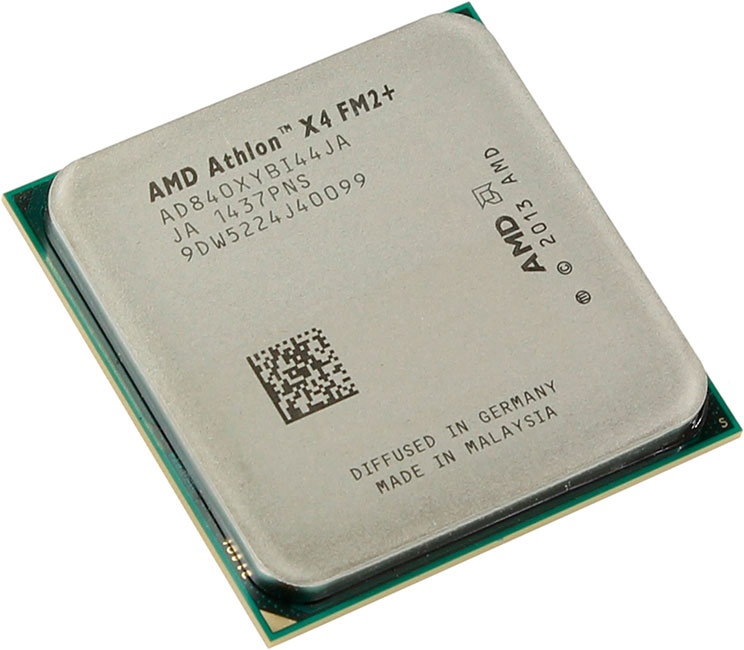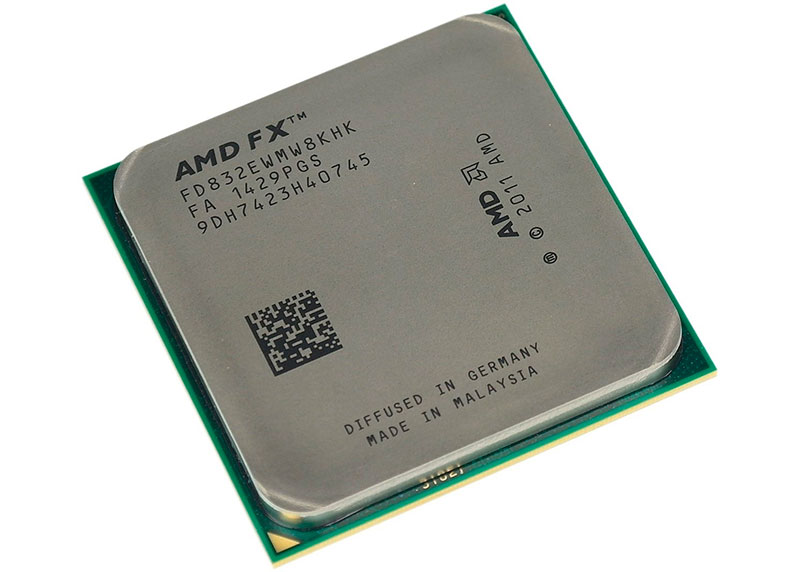Despite the dominance of consoles and portable gaming on tablets and smartphones, computers are still the main tool for gamers. Only powerful gaming stations are able to rework "tons" of graphics and produce an amazing picture the way the developers conceived it. However, assembling a stationary computer independently, first of all, many users find it difficult to choose a processor suitable for the system unit. After all, it is in the chipset that "lies" the main power of the computer. Why is Intel better than AMD in the gaming segment? Does it make sense in gaming processors? Does the number of FPS depend on the number of cores? You will receive answers to these and other questions in this article.

Content:
Gaming processor which company choose
At present, the dual power reigns in the market of computer processors: IT giant Intel and the "ever-chasing" AMD share the processor market among themselves. No one, either the Russian Elbrus or the Taiwanese Qualcomm with Tegra, decides to intervene in the war of the two manufacturers.
Such a double monopoly is due to the fact that other companies are not ready to offer what Intel and AMD have. Elbrus is not popular enough and strong, and Qualcomm has enough mobile segment, in which Kvalki are leaders. Tegra has powerful gaming chipsets in its lines, but they are primarily designed for portable devices - gaming tablets and consoles.
Thus, the choice of the game processor is "automatically" reduced to two companies:
1. Intel
Processors are expensive and powerful, for every taste and color.
2. AMD
Processors are cheaper in comparison with Intel, but inferior in power.
Before proceeding to the choice of a specific processor model, you need to understand that FPS does not depend on the number of cores in the chipset, and the presence of a graphics core in it will not improve the game graphics. Thus, even dual-core solutions can be better than 8-core “stones” with an integrated video card.
As a result, when choosing a gaming processor, you need to pay attention to the following points:
- availability of L3 volume cache, measured in megabytes (the more the better);
- CPU clock speed;
- the chipset has at least two cores and four threads (the current games are not demanding on the number of cores, but sometimes they do not run on dual-core processors with no virtualization of threads);
- availability of SSE 4.1 instructions for the latest games.
In addition, the lack of integrated graphics only reduces the cost of the processor. Undoubtedly, the current integrated Intel 630 allows you to play the games of 2014-2015 in a comfortable mode, but it is still not enough for modern titles. As a result, after selecting a gaming processor, you will need to look at the video card from the same game segment.
The best processors for games from Intel
Intel has several model lines and generations of processors. In 2017, the seventh generation of Intel processors on the Kaby Lake architecture was presented. In addition to the Core line, subdivided into i3 (initial level), i5 (middle level) and i7 (top level), Intel also has Core M series processors (M3, M5, M7) in production, which are characterized by low power consumption, and as a result, uselessness in active cooling. On top of that, Intel is developing a line of Atom processors for mobile devices, Celeron for budget notebooks and Xeon for server technologies.
When choosing a gaming processor, we are primarily interested in the "stones" of the Intel Core line - i3 / i5 / i7, which, in addition to the index, have a letter-letter prefix in the name.Take, for example, desktop i3-7100U: i3 - belonging to the initial level, the first figure 7 - the seventh generation on the architecture of Kaby Lake, 100 - the first model in the subfamily, U - ultra low power consumption.
Do not forget to pay attention to the name of the processor. And besides, looking into the past, “selecting” Intel processors of 5th generation and below is not worth it, since they are not particularly relevant for gaming battles, due to the lack of necessary instructions and technologies.
Intel's entry-level gaming processor - Core i3-6100 Skylake

Of course, to call the i3-6100 processor a “budget” level, the language does not rotate, since its cost and power are comparable to AMD’s top solutions. But Intel does not produce cheap processors.
This “stone” differs from the newest i3-7100 by a slightly lower core clock and video chip frequency, as well as other integrated graphics (530 vs. 630).
The cost of the new Kabi Lake processor will be higher in the near future, as a result, the i3-6100 model on Skylake will be enough for an entry-level gaming station. The processor is able to unleash the potential of any video card on the market, including the latest GeForce GTX 1080 Ti from NVIDIA.
Advantages:
- Pretty "fresh" architecture Skylake;
- A powerful graphics core capable of replacing a “weak” video card at the initial stages;
- The latest “generation” of the LGA1151 socket;
- High clock frequency of 3.7 gigahertz;
- 3 MB L3 cache;
- DDR4 memory support;
- Hyper-Threading support for virtualizing additional two threads;
- High performance with sufficiently low power consumption.
Disadvantages:
- High price for entry level;
- The presence of two cores.
Intel mid-level gaming processor - Core i5-6400 Skylake

When it comes to real gaming stations, players have to choose between the two lines of i5 or i7 processors. With a small budget, you should prefer the Intel Core i5-6400 Skylake processor, which is in no way inferior to the “big brother”. Four cores, a volumetric L3-cache and one of the latest used architectures allow the processor to cope with game tasks with a bang.
Undoubtedly, the one and a half times higher price compared to the i3-6100 may scare the customer, but note that the i5-6400 uses 4 physical cores and an integrated HD Graphics 530 video card. Thus, all games that are demanding on the number of cores will run on this processor. However, the lack of Hyper-Threading still depresses those who, in the intervals between game battles, decode video or work in Avtokad.
Advantages:
- 6 megabyte L3 cache;
- Quad-core processor;
- Socket LGA1151 and Skylake architecture;
- Support for SSE 4.2;
- Availability of Turbo Boost technology with overclocking up to 3.3 GHz;
- DDR4 memory support;
- Excellent overclocking potential (up to 4.7 gigahertz) together with “cold heart”.
Disadvantages:
- The lack of technology Hyper-Threading (stream virtualization);
- Dual channel RAM;
- Price, price, price ...
Top-level Intel gaming processor - Core i7-6700K Skylake

The top segment of gaming processors in the present time is presented as a new generation of i7, and a little less "old» Skylake. The gain in productivity and the differences between generations are not so significant. If you are trying to save every thousand when buying a processor, then Intel Core i7-6700K Skylake should be preferred. This quad core chipset is one of the top solutions on the market.
True, it differs from the above “Intel five” only by the increased clock frequency and the presence of virtualization of the cores, which are a little useless in games. i7-6700K, which appeared in the third quarter of 2015, is still popular among gamers because of its power and speed of work. It does not require a cooler, the size of a house, and a power station at its side. Fast, cold and terribly expensive ...
Advantages:
- Four physical cores, which is enough for modern games;
- The presence of hyper-threading and 8 threads;
- High clock frequency of 4 GHz;
- 8 megabytes of L3 cache;
- Socket LGA1151, modern instructions SSE 4.2;
- Unlocked multiplier, giving great overclocking options;
- DDR4 memory support.
Disadvantages:
- "Useless" Turbo Boost, overclocking the processor for an additional 200 megahertz;
- The high price for the processor, which in performance does not actually exceed the i5-6400.
The best processors for games from AMD
In the near future, the new Ryzen processors from AMD will enter the market, which, according to the company, will not be inferior in power and power consumption to Intel's opponents. However, at the time of writing, AMD Ryzen processors were not available for sale, as a result of which they were not included in the review of the best game processors.
As in the case of Intel, AMD has several lines. The E-series is designed for budget notebooks, and the A-line with indexes denoting the number of cores incorporates a graphics core. For example, A8 means that the chipset belongs to the A-family and that it has eight cores.
The Phenom family is already morally obsolete, which cannot be said of the Athlon processors without integrated graphics, which are still popular in the budget segment. Representatives of the FX line with Zambezi or Vishera cores are currently considered to be the main competitors of Intel. By the way, the index processor series FX can tell you about it basic information. For example, AMD FX 8310: 8 is the number of cores, 3 is the presence of Vishera cores (numbers 1 and 2 are Zambezi cores), the two remaining numbers are the frequency of the processor within the same family.
AMD Entry Level Gaming Processor - Athlon X4 840 Kaveri

Despite the “old” core of 2014, the AMD Athlon X4 840 Kaveri processor is still considered the best in the budget segment. Four cores operating at a frequency of 3.1 gigahertz, along with 4 megabytes of L2 cache, easily cope with the tasks assigned to the processor.
And besides, the democratic price of a couple of thousand rubles makes it possible to equip an entry level gaming station with the Atlon. However, the lack of L3-cache still affects its performance, which is not enough for top-end games.
AMD Athlon X4 840 processor will be the best solution for gamers with a reduced budget for a gaming computer. You cannot count on ultra settings in GTA V or the third Witcher, but the processor will be able to cope with titles of 2015-2016 with a sufficiently high performance video card.
Advantages:
- Low price;
- L2 volume cache of 4 megabytes;
- SSE4 instruction support;
- Four physical cores without any virtualization;
- Unlocked multiplier.
Disadvantages:
- Absence of L3 cache;
- Only the unboxing version is available for sale, with a 1-year warranty;
- Cooling requires a good cooler;
- Legacy FM2 + socket.
AMD Mid-Range Game Processor - FX-8320E

If you are looking for a cheap eight-core processor, then the FX-8320E is better for you. The processor uses 8 cores operating at a frequency of 3.2 gigahertz, and volume L2 and L3 caches of 8 megabytes. The “bulldozer” processor with an AM3 + socket is comparable in performance to the Core i3 on Haswell architecture, but at a price it is cheaper than the above i3-6100.
But the main problem of AMD-processors in addition to the outdated 32 nm process technology is their heating, as a result of which high-quality cooling is required for comfortable operation of the processor. Alas, the boxed cooler supplied with the FX-8320E does not cope well with the tasks assigned to it.
Advantages:
- 8-core processor;
- 3.2 GHz high frequency per core;
- The amount of cache L3 8192 KB;
- Low price for 8-core chipset;
- Support for all modern instructions;
- In winter, it can be used as a heater.
Disadvantages:
- High heat dissipation of 125 W;
- Useless boxed cooler, which only increases the final cost of the processor.
AMD Top Level AMD Gaming Processor - FX-9590 Vishera

Despite the “nine” in the name of the processor, AMD FX-9590 Vishera belongs to the category of eight-core chipsets of the top level. Of course, the performance of this model in its price range is significantly inferior to counterparts from Intel, but the overclocking potential of the chipset at a high level.
The 8 FX-9590 cores operate at 4.7 GHz.AMD-shny processor can “overclock” any video card available on the market, although it will require very high-quality cooling, since the heat dissipation of 220 W is the main disadvantage of the “stone”.
Advantages:
- High core clock frequency of 4.7 GHz;
- Democratic price for a similar configuration;
- The volume of L3 and L3 caches is 8192 Kb;
- Overclocking potential.
Disadvantages:
- Awesome heat dissipation of 220 watts;
- Outdated technical process;
- Requires a good cooler, and even better SVO (water cooling system).
What gaming processor to buy
The CPU race, which has lasted for several decades, has slowed down a bit in recent years. There are a huge number of models on the chipset market, which differ from each other not only in the number of cores and frequency, but also in the presence / absence of integrated graphics and various technologies.
However, it is worth considering that the quality of the image and the number of FPS depend not only on the processor. Video card, hard disk, RAM - all of these components affect the overall system performance.
1. As a result, chasing the top and expensive solutions in the form of a Core i7-6700K Skylake is not necessary. For the difference in price between the two lines of chipsets, you can purchase an SSD disk, from which there will be much more benefit than from additional virtual streams or increased frequency by 200 megahertz.
2. For players with a limited budget, the Athlon X4 840 Kaveri processor is suitable, and the remaining money is worth investing in a productive video card.
3. In the mid-budget segment, a good solution will be the Core i5-6400 Skylake, which is enough for all games released in recent years.
It will be interesting to friends too










